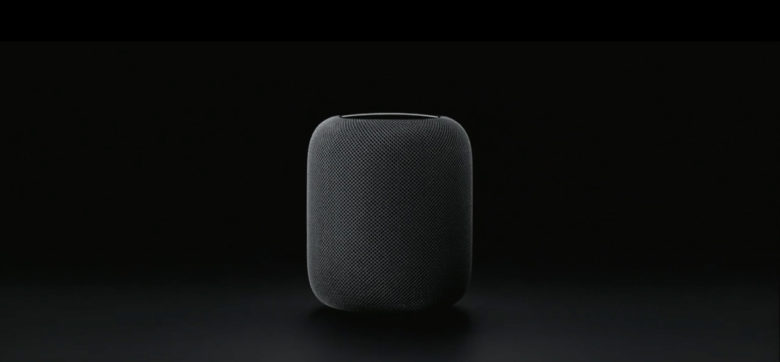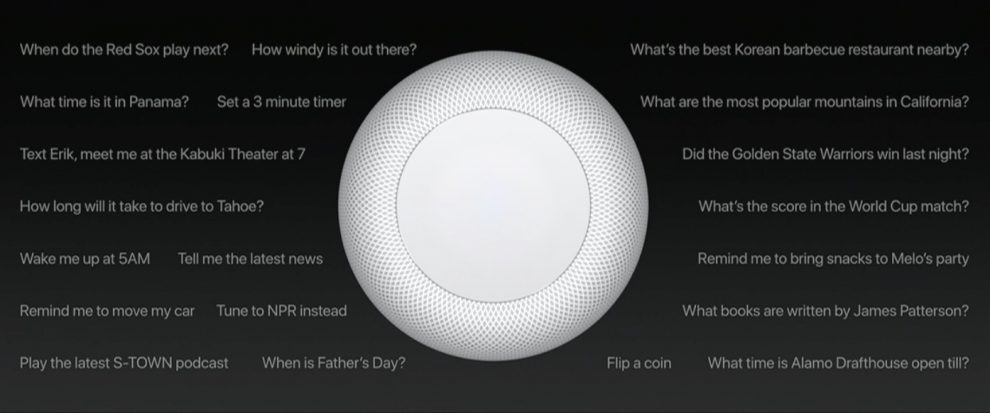Rumors have finally been put to rest around Apple’s new Siri-powered smart speaker after the Cupertino device and software giant unveiled its HomePod that will start retailing at $349.

While the Siri-controlled HomePod is certainly designed to be useful around the home, the obvious focus here has been on sound quality more than anything else. Yes, the esthetics quotient is high, as with any Apple hardware, but the 4-inch woofer and 7 surround tweeters are definitely a little overkill for a device of this size.
That said, overkill might be just the thing required for this segment. Microsoft has yet to showcase its Harman Kardon Invoke in the real world, but audio is once again the focus for that product as well.

Considering the fact that streaming music via these devices is only the third most popular use of smart speakers, it’s surprising that Apple didn’t put much effort into making Siri a little smarter on the HomePod.
Siri’s capabilities are limited when compared with Google Home’s Google Assistant. And even Alexa on Amazon Echo can overshadow her linguistic and response-oriented abilities with its AI chops and its repertoire of more than 10,000 Alexa Skills that have been developed over the past several months.
Therefore, offering better sound quality might not necessarily be the tipping factor that will put HomePod sales into overdrive.
Moreover, it’s pretty expensive at $349. Both its chief competitors retail for far less than $200.
In earlier articles, we covered all the reasons why the product will definitely sell a few million units, but we also raised a question about long-term sustainability unless Apple made some serious moves with Siri’s skills for various tasks.
Of course, there’s no doubt that HomePod will deliver much better audio than any other smart speaker product in the market right now, because it not only listens to you, but it listens to itself. By analyzing the sound received from its own music playback, for instance, the HomePod can fine-tune its speakers to give you the best immersive audio experience for the largest physical area possible.
But even with those capabilities, $349 is expensive for a home speaker, especially in cases where multiple devices are required to cover a large home area.
More importantly, the competition is getting better at what it does. Google Home 2 is expected to double as a second router or range extender, and even the recent update for the current model gives it the ability to cast visual content onto a smartphone or Chromecast-enabled TV set. What’s more, Amazon Echo Show is now offering a visual – albeit mono-directional – experience as well.
The point is, the Apple HomePod is not designed to be a disruptive device that will storm the market and edge its competitors clean out of the way. Then again, does it need to be?
The real question is: HomePod is undoubtedly a great product, but can it carve out enough of a niche for itself so that it can grow along with the smart speaker market? That question will remain unanswered until we see some hard numbers from subsequent sales of HomePod.
Thanks for visiting! Would you do us a favor? If you think it’s worth a few seconds, please like our Facebook page and follow us on Twitter. It would mean a lot to us. Thank you.


